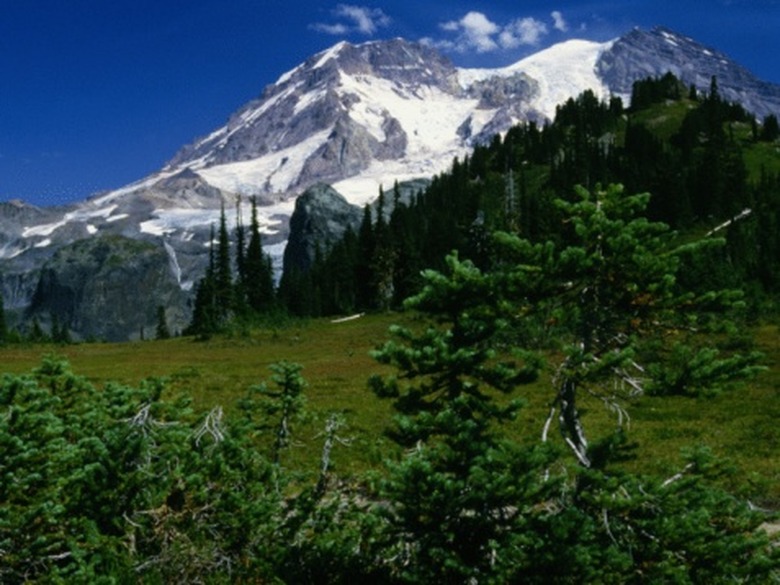What Are The Features Of A Subduction Zone?
The Earth's crust is made of plates (or pieces of earth) that move on top of the mantle. Oceanic plates are denser and therefore heavier than continental plates. Oceanic plates are created at oceanic ridges, where the Earth's plates are pulling apart, and made of magma. At first the magma is hot and light, but as it moves away from the rift, it cools and become denser. A subduction zone is created when a dense oceanic plate slides under a lighter plate. Three main features are associated with subduction zones.
Oceanic Trenches
Oceanic Trenches
Oceanic trenches are formed at subduction zones. Oceanic plates meet continental plates in the water, so trenches are formed as the oceanic plate goes under the continental plate. These trenches can be very deep if the plate that is subducting (going down) is an older and colder plate. Younger oceanic plates are less dense and the angle will be shallower. The Mariana Trench is the deepest point on Earth and a prime example of a deep subduction zone.
Volcanic Arcs
Volcanic Arcs
Volcanic arcs form parallel to subduction zones. As one plate descends under another plate, it heats up and becomes magma. The magma will rise through the crust until it reaches the surface. This magma creates a chain of volcanoes or a volcanic arc near the boundary of the top plate. There are two types of arcs: island arcs and continental arcs. An example of a continental arc is the Cascade Mountains in the Pacific Northwest of the United States.
Earthquakes
Earthquakes
Earthquakes occur along the subduction zone. The quakes will be shallow along the trench and be deeper as the plate sinks. Earthquakes associated with deep water trenches are said to be along the "Wadati-Benioff Zone." It is believed that the farther away from the trench the earthquake occurs the deeper the quake is within the Earth's crust. Examples of places that have earthquakes due to subduction zones are the Pacific Northwest and along the Andes Mountains.
Other Subduction Features
Other Subduction Features
Other features include accretionary wedges, forearc basins, backarc basins and remnant arcs. Accretionary wedges are pieces of the subducting plate that have broken off at the trench. Forearc basins are between the island arc and the trench, whereas the backarc is behind the island arc. These basins catch sediment (dirt and small rocks that wash away in rain) runoff from the island arcs. Remnant arcs occur when the subduction location changes and are no longer active volcanoes.
Cite This Article
MLA
Siserir, Rhonda. "What Are The Features Of A Subduction Zone?" sciencing.com, https://www.sciencing.com/features-subduction-zone-8122016/. 24 April 2017.
APA
Siserir, Rhonda. (2017, April 24). What Are The Features Of A Subduction Zone?. sciencing.com. Retrieved from https://www.sciencing.com/features-subduction-zone-8122016/
Chicago
Siserir, Rhonda. What Are The Features Of A Subduction Zone? last modified March 24, 2022. https://www.sciencing.com/features-subduction-zone-8122016/
